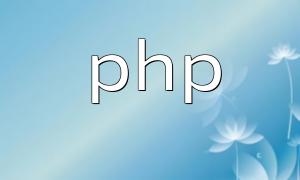The foreach loop in PHP is a common and efficient way to iterate over array elements, allowing easy access to each item. The basic syntax is as follows:
foreach ($array as $value) {
// Perform operations on $value
}Here, $array is the array to be iterated, and $value represents the current element in the loop. For example:
$fruits = array("apple", "banana", "orange");
foreach ($fruits as $fruit) {
echo $fruit . "<br>";
}Besides indexed arrays, foreach can also be used to traverse associative arrays. Associative arrays store data as key-value pairs, and we can retrieve both key and value simultaneously using the $key => $value syntax. For example:
$student = array(
"name" => "Alice",
"age" => 20,
"major" => "Computer Science"
);
foreach ($student as $key => $value) {
echo $key . ": " . $value . "<br>";
}Using references in foreach lets you modify the original array elements directly without copying them, which improves performance and saves memory. Here's an example:
$numbers = array(1, 2, 3, 4, 5);
foreach ($numbers as &$number) {
$number *= 2;
}
print_r($numbers);For multidimensional arrays, nested foreach loops can be used to access elements inside inner arrays. For example:
$students = array(
array("name" => "Alice", "age" => 20),
array("name" => "Bob", "age" => 22)
);
foreach ($students as $student) {
foreach ($student as $key => $value) {
echo $key . ": " . $value . "<br>";
}
echo "<br>";
}Within a foreach loop, you can use break to exit the loop early or continue to skip the current iteration, allowing flexible control over loop execution. Example:
$numbers = array(1, 2, 3, 4, 5, 6);
foreach ($numbers as $number) {
if ($number % 2 == 0) {
continue;
}
echo $number . "<br>";
if ($number == 3) {
break;
}
}Mastering the diverse techniques of the foreach loop empowers PHP developers to efficiently manipulate array data. Whether iterating over indexed arrays, associative arrays, or multidimensional arrays, modifying by reference for better performance, or combining break and continue for better flow control, these skills enhance both code readability and execution efficiency. We hope this guide helps in your PHP development journey and encourages you to explore and apply these techniques in practice.









